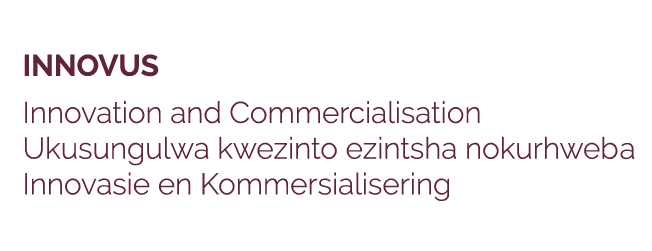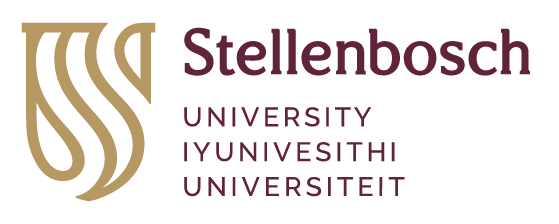New funding for SNC
On 1 November 2017, the team at the Stellenbosch Nanofiber Company (SNC) celebrated SNC’s sixth birthday! If you haven’t already, please make sure you send them a card or a magnum bottle of wine. It’s been quite the journey from their ‘garage days’, where founder Eugene Smit used a feta cheese tub to demonstrate his proof of concept to Innovus, to a company that’s quickly spinning its own web of possibilities in the medical space.
At a quick glance, what SNC does is allow for the production of nanofibers at a rate of between 10 and 100 times faster than competitors. They can do this because they completely overhauled the production process, using the patented SNC BEST™ ball-electrospinning technology which pushes out over a kilogram of nanofiber per hour, rather than the measly few grams we’re used to. This means that using nanofibers in commercially scalable activities – high performance filters, biomaterials, batteries and composites – now makes a lot more sense.
Regardless of the many potential applications, SNC have decided to first focus their efforts in the medical space, because they believe it’s where they can make the biggest difference. Here they have already become one of the industry leaders in the development and commercial manufacture of medical grade electrospun fibre materials and products. Using their strong materials science base and high-throughput electrospinning platform, they work with medical device companies to create for-purpose materials and products. These include scaffolding for tissue engineering and stem cell culture, an implantable resorbable scaffold for culture of retinal pigment epithelium (for the layman, that’s a replacement part for the eye), and a range of advanced wound care products. Nanotrix®, a highly innovative product that SNC developed with Gauteng-based Southern Medical, helps patients with 2nd-degree burn wounds to rapidly heal by acting as a breathable barrier that keeps out bacteria, whilst simultaneously creating the ideal conditions (moisture and pH) in the wound to accelerate healing.
Another benefit of their innovative, flexible approach is that their nanofibers can be spun with life-saving drugs already impregnated within them, ready to be released into the patient’s system. Built for purpose. This they can do on behalf of their clients, or at their clients’ own facilities.
Nothing denotes success as credibly as when your backers decide to get in even deeper. Thanks to an additional investment from forward-thinking stalwart supporters Stellenbosch University, PSG Alpha and a private angel investor, the $10bn market of advanced wound care is about to hear a lot more from SNC. With the additional investment amount they will be able to push harder in the medical space, extend their already strong 23-person staff, expand their presence in Europe and the United States, and later even disrupt entirely new markets (they’re considering the energy and electronics areas next).
A new CEO for Bridgiot
A few months ago we put out a call for a leadership position in one of Innovus’ most exciting new companies. Due to (what this author believes is) the quality of the writing, and a fortuitous family relocation to Stellenbosch, Nico Pretorius answered.
As the tech-minded founder of AlwaysOn, Nico always wanted to play more with the Internet of Things, so Bridgiot was a perfect fit. They are the creators of Geasy, a smart-application that allows you to monitor and control your geyser’s water and electricity usage, and a follow-up innovation, a smart water meter called Dropula, which monitors and helps to control the overall water consumption of a specific location – home, office or business park.
With Nico at the helm, the company has taken a rather dramatic shift. Geasy has been put on the back-burner, while Dropula has become their focus and, through business-model re-engineering, so much more than a consumer product. Bridgiot have decided to target schools as the recipients of their technology. Why schools? There are a few reasons:
Firstly, the consumer market is very difficult for a small start-up to really get their teeth into, so larger organisations present a less foggy opportunity. More importantly, schools, especially those of the previously disadvantaged kind, waste a fortune in water, and thus money they don’t have, every month. Secondly, in founder Prof Thinus Booysen’s words, “We really want to make a massive difference in the communities.” So, that’s what they’re doing.
In the first pilot school, Hector Peterson Secondary, into which their Smart Water Meter was easily retrofitted, they manage to detect, and bring an end to, wastage of 37Kl of water – more than half their daily usage. Since then, they’ve brought the total water usage down to less than 10Kl a day – which is a mere 10% of what Hector Peterson were spending before Bridgiot got involved. In fact, Bridgiot’s Dropula device is currently saving the school more water that 60 households use! They’ve since started working with Laerskool Eikestad, Hoërskool Stellenbosch,AF Louw and Renish Primary, all of whom are seeing the massive savings that come along with the innovations that Bridgiot brings to the chalk-board.
These massive successes, which could not be more relevant with the Western Cape’s current water issues, have attracted the attention of retail giant, Shoprite, who partnered with BridgIot earlier this year. With Shoprite, the team will be targeting the top 100 most water-intensive, previously disadvantaged schools in the Western Cape, to help them realise the same savings as Hector Peterson. And it couldn’t have come at a better time for all of us down here.
If you’re curious to check out the real-time, live statistics on their schools, visit www.schoolswater.co.za!
Cargo Telematics acquires investment from EMSS
One day soon, our highways will be safer than they’ve ever been – largely thanks to the work that Leo McNally has done with Cargo Telematics. In a sentence, the system alerts the driver and automatically adjusts the tensioned straps that hold cargo to the back of long-haul trucks when load-shifting occurs, keeping the massive, deadly, expensive content exactly where it is supposed to be, until it reaches its final destination.
And now that EMSS, a very tech-savvy bunch who have traditionally specialised in the antenna and electromagnetics space, have become involved, this change may happen sooner than any of us were expecting.
The story behind the joining-of-forces is an interesting one. A recipient of a TIA Seed Fund grant, which Cargo Telematics is, is required to work on their innovation full time, in order to bring it to commercial success as quickly as possible. Leo, who has for a number of years been employed by EMSS, needed to make a choice – ditch the innovation, or leave EMSS, which he was loath to do… Thankfully, LJ du Toit of EMSS, once he heard about Cargo Telematics, decided that it was a perfect addition to the portfolio and retained both the invention and then inventor. “We were in immediately!” says LJ, excitedly.
The additional funding that comes with the partnership, as well as the access to skills and expertise – application building, electronics, Wi-Fi - will help build Cargo Telematics into a globally competitive company. Recently, they acquired patents in the USA, Australia and Europe for just this purpose.
The team is looking at growing their offering, once the initial product has been perfected. This will include a tablet app for easy monitoring and traditional telematics, and data analytics. Leo and LJ believe that the future will be built on a backbone of efficiency, as Cargo Telematics not only keeps transportable goods safe, but keeps their transporters profitable.
Innovus, Stellenbosch University
|
15 De Beer Street
Stellenbosch
7600
South Africa
|
PO Box 3135
Matieland
7602
South Africa
|
|
t +27 (0) 21 808 3826
e info@innovus.co.za
e forms@sun.ac.za |

